The Lionfish Have Invaded, But a Ragtag Army of Divers and Chefs Are Fighting Back
Those waging the war against this devastating wave of the venomous species have taken on an ‘eat ‘em to beat ‘em’ approach
/https://tf-cmsv2-smithsonianmag-media.s3.amazonaws.com/filer/d2/2d/d22da048-2b18-4ce1-88d3-05bf6925fe74/jun2018_c01_lionfish.jpg)
Friday
We were somewhere around Pensacola Pass, on the edge of the Gulf of Mexico, when the over-the-counter drugs failed to take hold.
Just after sunrise the seas are running two or four or six feet and at the mouth of the Gulf where the bay opens up and the tide meets the wind from the east and the west and the north and the south is a washing machine of razorback crests and sub-basement troughs, waves running horizon to horizon, some as big as houses, whitecaps peeling off the long rollers, the water every blue and every green, the rise and fall of our little boat a series of silences, groans, engine noises and cymbal crashes as we pitch and roll and the whole boatload of gear works itself loose from the fittings, the tanks and the spears and the wet suits and the vests and the fins and the buckets and the coolers and computers and the compasses and regulators and the backups to the backups to the backups, every dive system three times redundant now soaked and streaming, bobbing in the bilges, and the waves coming over the side, the top, the stern, the bow, all of us pitching and yawing and rolling and moaning and swearing and all that gear floating at our ankles with the bags of white cheddar popcorn and the wasabi and the Red Vines, all of us grabbing for the gunwales or the rails or each other, Captain Andy at the wheel calm as a vicar, Barry with his feet planted, singing at the top of his lungs, “Welcome back, my friends, to the show that never ends,” and the planetary surge of 500 quadrillion gallons of angry water pouring through the tiny nautilus of my inner ear on its way to my stomach. I lean over the side and throw up again. Doubled over the transom, John casually does likewise. The motion-sickness tablets do nothing.
We all laugh.
We’re here to hunt lionfish.
**********
Before we get to the marine biology, this has to be said: The lionfish is one of the most beautiful animals alive. With its bold stripes and extravagant fins, its regal bearing and magisterial stillness, every lionfish is a hand-lacquered 11th-century Japanese fan. It is a diva, a glamourpuss, a showoff. If you ran a hedge fund in Greenwich or Geneva or Tokyo, the first fish you’d buy for that 100,000-gallon aquarium in your lobby would be a lionfish. It is in every respect spectacular. And in this hemisphere it is an eco-killer, a destroyer of worlds.
Four-hundred-twenty-two words of marine biology boilerplate, a NOAA cribsheet, and a warning:
In the southeast U.S. and Caribbean coastal waters the lionfish is an invasive species. It competes for food and space with overfished native populations. Scientists fear lionfish will kill off helpful locals such as algae-eating parrotfish, allowing seaweed to overtake coral reefs already stressed by rising water temperatures and bleaching. Lionfish kill off other small cleaner-fish, too, which increases the risk of infection and disease among sport fish and cash fishery populations. In U.S. waters, lionfish stocks continue to grow and increase in range. Lionfish have no known predators here and reproduce all year long; a mature female lionfish releases roughly two million eggs a year, which are then widely dispersed by ocean currents.
Two million eggs a year.
Scientific Name: Pterois volitans (red lionfish)
Unscientific, badass nickname: devil firefish
Identification: Lionfish have distinctive brown and white or maroon and white stripes covering the head and body. Tentacles protrude above the eyes and below the mouth. They have fanlike pectoral fins and long dorsal spines. An adult lionfish can grow as large as 18 inches.
Native Range: The South Pacific and Indian oceans, where natural predators, including grouper, keep their population in check.
Habitat: Lionfish are found in the tropics, in warm water and in most marine habitats. Lionfish have been found in or on hard-bottom ocean floor, mangrove, sea grass, coral and artificial reefs at depths from 1 to 1,000 feet.
Non-native Range: Since the 1980s, lionfish have been reported in growing numbers along the southeastern United States coast from Texas to North Carolina. Juvenile lionfish have been collected in waters as far north as Long Island, New York.
Lionfish are eating machines. They are active hunters that ambush their prey by using their outstretched pectoral fins to corner them. If lionfish are unable to adapt to declines in their prey, their population might decrease. In the short term, however, they will turn to cannibalism.
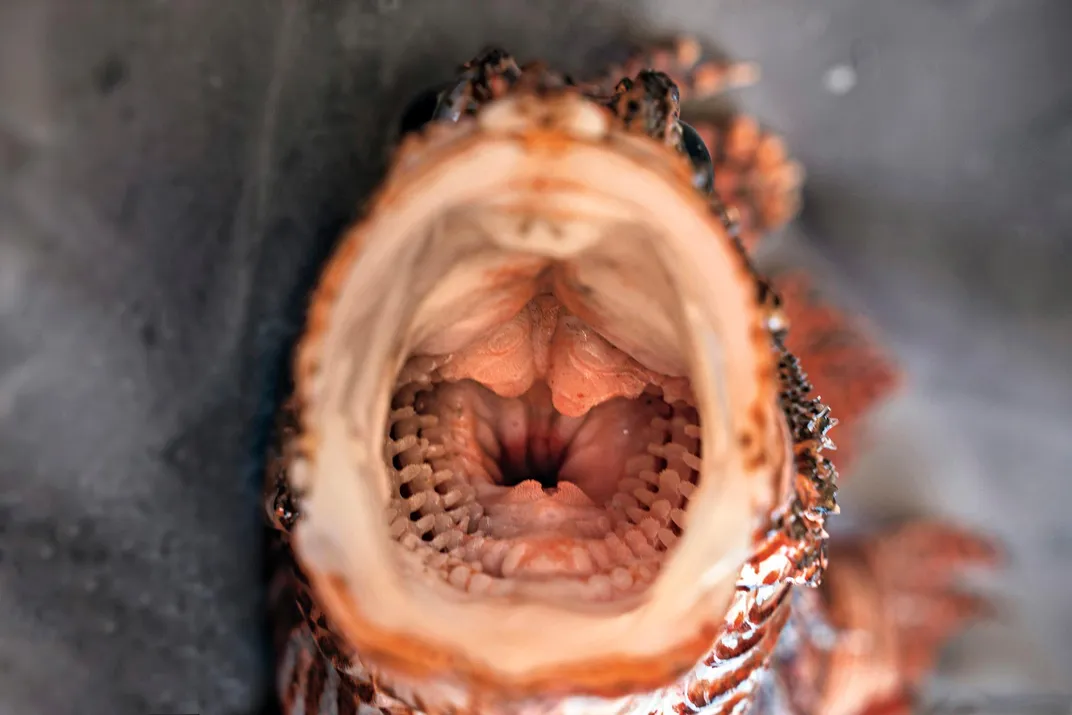
Warning! Lionfish spines deliver a venomous sting that can last for days and cause extreme pain. Also sweating, respiratory distress and even paralysis. Lionfish venom glands are located in the spines on the top and the sides and the bottom of the fish. They can sting you even after the fish is dead. The venom is a neurotoxin. Once the spine punctures the skin, the venom enters the wound through grooves in the spine. If stung, seek medical attention immediately.
The guys on the dock will tell you that the sting of a lionfish is like “getting hit hard by a hammer, then injecting the bruise with hot sauce.” Wear gloves.
How they got here no one really knows. Like giant shoulder pads and the music of Frank Stallone, some things about the 1980s remain inexplicable. The arrival in American waters of the lionfish is one of these mysteries. There are a couple of recurring stories, but they don’t really add up to a truth. The first is that some home aquarium owner emptied a few of them into the ocean one night—the narrative equivalent of the New York City alligator-down-the-toilet story. Another story suggests a big resort hotel in the Caribbean mishandled the filtration setup on its giant destination aquarium and pumped them out into the sea. Or that a breeding pair escaped during Hurricane Andrew. Maybe they arrived here in the water ballast of big cargo ships from the Pacific.
Now they’re everywhere. Like locust. That’s the bad news. The lionfish has Florida in a noose, and from Mobile, Alabama, to Cape Hatteras, North Carolina, the lionfish is a blight, a plague, an epidemic. A perfect evolutionary machine for eating and ruin, every lion-fish is the lace-collared cutthroat in your underwater Elizabethan costume drama.
The good news? Lionfish is delicious.
**********
All this I learned at the Smithsonian Marine Station in Fort Pierce, Florida. They have a team of molecular scientists and marine biologists there, and benthic ecologists and visiting zoologists and doctoral candidates and postdocs and technicians and reef experts. They have a research laboratory and a public aquarium where a couple of times a day you can watch a little lionfish get fed. This is out on Seaway Drive, and on a hot spring morning the light here is like the aftermath of a blast. In fact, when you drive from here to Pensacola, all of Florida feels like a trick of the light. Overbright or too dark, at once too soft and too sharp, underwater or above it, you’re never sure what you’re seeing. At noon the asphalt shimmers and the sand dazzles and at midnight the stars swim in an ink-black heaven above the cypress and the slash pine. Is that a Disney castle rising in the distant murk, or just a jet of swamp gas? From Daytona to the Everglades to the Keys, from Universal Studios to the Fountain of Youth, Florida is a fever dream, an unreliable narrator. Florida is a fiction. It is an impossible place.
**********
And that’s how we all wound up in this little boat at the Lionfish World Championship. One of dozens of lionfish rodeos or derbies or hunts around the state, events like this are the first line of defense against the lionfish takeover. The premise is simple: Whoever spears the most lionfish wins. Sponsored by Coast Watch Alliance and the Florida Fish and Wildlife Conservation Commission, Reef Rangers, the Gulf Coast Lionfish Coalition, and about a dozen others, over the last few years this tournament has cleaned thousands of lionfish out of the local ecosystem. In 2016 alone it brought in more than 8,000 fish—in a weekend. I’m here to watch one of five or six teams kill every lionfish it sees.
Even before dawn the marina is loud with gulls and banging halyards and happy obscenity. As the sun rises so does the wind, and wary talk of what a wild, E-ticket ride the day’s going to be. Before any of us step aboard, the little boat is already filled with gear and we’re still lashing coolers to the deck. There isn’t a spare inch anywhere. But off we go.
Capt. Andy Ross is a fidget spinner of a man, quiet, apparently motionless, but going a thousand miles an hour. He is fit and tanned and of some glorious sunworn indeterminate middle age. He is one of the tournament founders, too, and master and commander of the Niuhi, a 25-foot catamaran dive boat with a small deckhouse and cabin and twin Yamaha 150s to push us out into the Gulf. Generally soft-spoken, from time to time while I’m redistributing my breakfast over the portside gunwale, he calls out to me with a small sideways smile, “Sporty today!”
Why yes, Cap’n, yes it is.
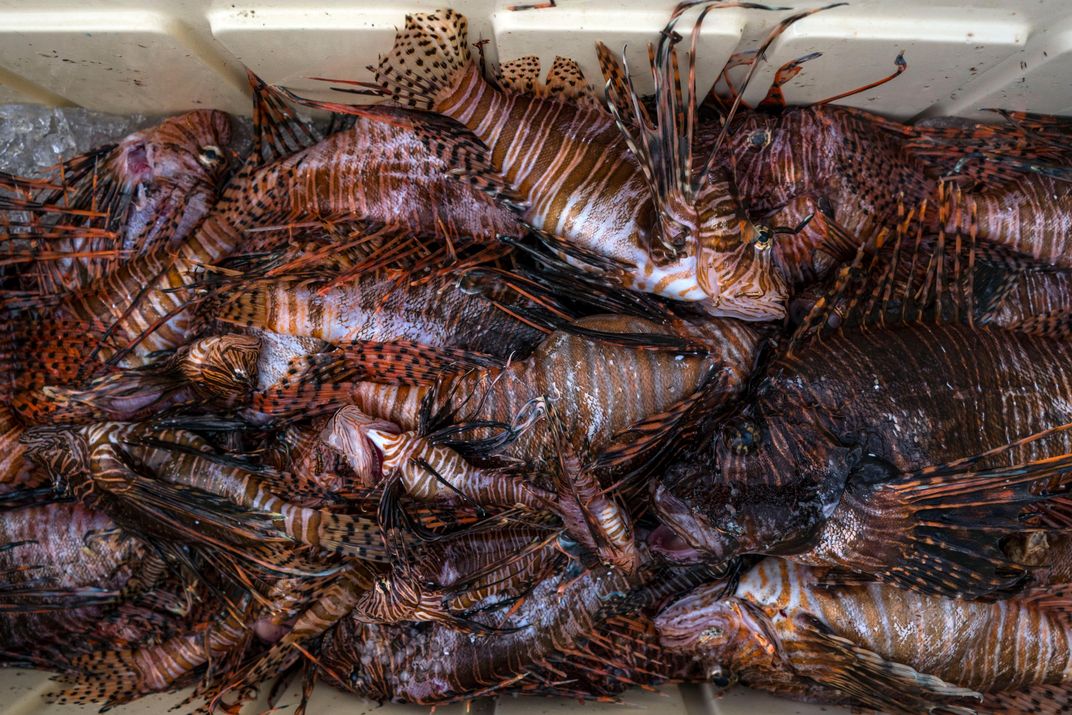
On the other hand, Barry Shively, the mate and dive master, never stops talking. Never stops. Never stops singing or storytelling. He is a dynamo, what grandma would have called a real live wire. He dives and spearfishes mostly for fun. His day job is repairing MRI and CT scanners and other nuclear imaging equipment. He is exactly the kind of charming knucklehead savant you need on a day like today. I was able to sit upright long enough to ask him to describe the early days of the lionfish siege in this part of the Gulf.
“So, we first started seeing them showing up here probably four or five years ago. The first year we seen like one or two. And we’d alert FWC and they were like, ‘Well where’d you see it? Let’s get some maps going.’ Then the science started and every time we came in they wanted to know....I mean they were meeting us at the dock asking questions. So, concern was growing and we didn’t realize it was going to bloom like this. The next year, it quadrupled. And then the year after that, it was 100-fold more than the prior year. It’s been an explosion and they have just taken over.”
John McCain, smiling a wide smile and vomiting calmly across from me, is a sales manager from Dive Rite, a manufacturer of scuba equipment. Next to him is Carl Molitor, an underwater photographer, calm as the Buddha and somehow eating a breakfast of yogurt and fruit. Next to Carl is Allie ElHage, who has been trying very hard to light a cigarette in the wind for the last few minutes. He invented and makes and sells the Zookeeper, a length of wide, clear PVC pipe with a plastic flange at one end and a Kevlar bag at the other, into which one stuffs one’s speared lionfish. He is smiling, too, and when he leans back and tips his face to the sun he is a picture of absolute happiness. Alex Page, salon owner and paralegal and recreational slayer of lionfish, sits on the midships gear locker with the peaceful mien of a man on his third morning at the spa. Everyone on this little boat but me is a lionfish serial killer.
The last thing you see of Pensacola as you motor out into the Gulf are the checkerboard water towers at the Naval Air Station. That’s what the town is famous for, naval aviators. Fighter jocks. And for prizefighter Roy Jones Jr. Otherwise, the travel posters are filled with beaches, seafood, board shorts and T-shirts and flip-flops. It’s the panhandle Eden.
Here’s how it works, even on a day as rough as this. You and your buddies head out past the horizon, about 18 miles. You’ll locate by GPS and by chart and by fish-finder an underwater structure likely to harbor a population of lionfish. Some of these structures are known to every charter captain everywhere, and some are jealously guarded secrets. There aren’t many coral reefs in the northern Gulf—it’s mostly a hard sand bottom down there—so these underwater features are almost entirely man-made. Picture a pyramid of I-beams six or eight feet high, or a sphere the same size. The state sinks them to promote habitat for sport fishing. Most of them, anyway. There are some shipwrecks down there, too, and some “habitat” sunk by enterprising locals in less enlightened times, like rusted school bus bodies and little hillocks of old appliances.

As a charter captain, Andy is a great example of a grass-roots response to an environmental problem. He was taking folks out spearfishing for snapper and triggerfish and he was seeing more and more lionfish crowding them out of the habitats.
“It just seemed like a light suddenly came on. I had written in to someone at one of the local chambers of commerce, I think we’ve got a big problem here. We need to probably address it and I wasn’t sure how to go about doing that. The Perdido Key Chamber of Commerce said, ‘Well, we’ve got some funds available for special projects. Why don’t we at least raise some awareness?’ I go, ‘That’s a great idea. How do we go about doing it?’ Let’s put together a tournament. It was a little rough at first, but we managed to pull off four or five small tournaments the first year that we had some funding. That just got the whole ball rolling pretty fast.”
With the water coming over the bow, you’re not going to anchor, you’re going to circle while your divers head down in twos and threes. The water out here is between 90 and 120 feet deep, so the divers breathe nitrox from their tanks, a cocktail of nitrogen and oxygen that allows them to make safer trips up and down and stay a little longer on the bottom. Program all that into your dive computer, and it gives back a precise dive profile: how long it takes to descend, how long you can stay, and how fast you can resurface. These are quick “bounce” dives, about ten minutes descending, ten minutes on the bottom, ten minutes back. And these are all very experienced divers. But even for them, it’s a bruising proposition trying to pull on gear while being flung from corner to corner, falling, colliding, tripping, swearing. Did I mention they’re all carrying spears? You hunt lionfish with what amounts to a modest trident, powered by a short length of surgical tubing.
That’s OK, fellas, I’ll wait here.
“Are we parked?” the divers yell.
“Yep,” says Andy, and the guys wobble the regulators into their mouths and roll backward into the water with a splash.
And that’s how we spend the day. Two or three of us always on board and two or three of us almost continually over the side hunting lionfish. Crocs and Kevlar gloves and weapons-grade sunglasses slosh around the bilge. We circle the divers’ bubbles until they’re ready for pickup. A lot of the exchanges at the stern ladder go like this,
“How many did you get?”
“25 or 30.”
“How many did you leave?”
“None.”
Then empty the Zookeepers into the cooler, get the lionfish on ice and head for the next spot. Andy peers into the fish-finder; Barry tells another story; Allie lights another cigarette. It’s all jawboning and affectionate insult and classic rock on the loudspeaker, “Radar Love” and PG-13 punch lines. Barry hauls the jumbo sandwiches out at midday and the Italian dressing and the peanut butter crackers and I excuse myself to go below. The boys are bringing up fish a dozen or two at a time. At one point, Alex brings up more than 100 fish himself. This is why we came. He is a giant killer.
“Be afraid, lionfish, be very afraid,” says Barry.
The rest of the day is a montage of iridescent water and Tintoretto sky, wisecracks and tattoos and lionfish. The coolers slowly fill, and by late afternoon we’re surfing back to the pass. The wind is up and the trip home rolls like a motocross track. “I’m tired, man,” says Allie to no one in particular.
“But it’s addictive, man, like Angry Birds,” Barry says, and we rise and fall and ride the crests home.
Somewhere far to the east of us, over the horizon, there is an all-women’s team, the first ever, and from what we can make out on the radio, they’ve been taking many, many fish. But it’s hard to know for sure; sandbagging and gamesmanship are a big part of the competition. You never want anyone to know your real numbers until the fish are totaled on Sunday. For now, the women and their lionfish are a distant rumor.
We’re back at the dock just before sunset. We might have speared more than 400 lionfish. Or we might not have. I am asked to keep mum on the matter. We are met by a couple of marine biologists. These tournaments are a terrific resource for scientists. Tonight, they’re checking the females for egg sacs, researching effective ways to interrupt that prodigious lionfish reproductive cycle. They’ll be at it for hours, well into darkness, and will handle every one of those fish.
As it says on Barry’s Zookeeper, LEAVE NO LIONFISH BEHIND.
Please Pass the Invasive
“If you can’t beat ’em, eat ’em” is the rallying cry of chefs in a growing movement to consume non-native species • by Daniel Fernandez
/https://tf-cmsv2-smithsonianmag-media.s3.amazonaws.com/filer/f1/5d/f15d1e26-6b29-479b-a4e9-e6b83c4682a1/jun2018_c19_lionfish.jpg)
Just about every week, Kemar Durfield, chef de cuisine at the Four Seasons Lanai, receives a shipment of venison butchered from axis deer. The white-spotted ungulates, imported in the 19th century by King Kamehameha V, have no natural predators in Hawaii and number more than 10,000 on Lanai alone, ravaging crops and pastureland. Durfield transforms the cuts into everything from pastrami to burgers to steaks. “It’s a better venison, a unique meat that most people can’t even get a hold of.”
/https://tf-cmsv2-smithsonianmag-media.s3.amazonaws.com/filer/1a/c4/1ac402d3-ae09-4a1a-a174-ff911c0a163b/jun2018_c02_lionfish.jpg)
The diminutive European green crab has an outsized appetite and threatens clam, mussel and oyster fisheries across the Northeast. Evan Mallett, chef at the Black Trumpet Bistro in Portsmouth, New Hampshire, first used the crabs, which sport tough shells and little meat, to enrich seafood stocks. But he also likes them fried. “It’s like eating crab popcorn,” he says. Fried crabs float in his signature bisque, which features invasive garlic mustard and three types of seaweed.
/https://tf-cmsv2-smithsonianmag-media.s3.amazonaws.com/filer/43/f8/43f8fcd2-ef75-4a3c-8438-642de1325949/jun2018_c17_lionfish.jpg)
Introduced to Florida in the 16th century by the Spanish explorer Hernando de Soto, wild boar now roam across Texas, with some two million causing $52 million in damage to farms, ranches and other property. Lone Star native Tim Love grew up hunting the beast, and serves it at his Fort Worth restaurant, Lonesome Dove. At first he drenched his boar ribs in barbecue sauce to hide the gaminess. But diners have warmed to his more untamed approach. “They’re happier tasting those different nuances.”
/https://tf-cmsv2-smithsonianmag-media.s3.amazonaws.com/filer/ab/bb/abbb7554-d057-4ff9-9e92-6d1aee0aa1ee/jun2018_c18_lionfish.jpg)
Philippe Parola, a chef and food entrepreneur based in Baton Rouge, Louisiana, has served up alligator, lionfish, bullfrog and even nutria. A leader of the edible invasives movement, he’s now focused on several kinds of Asian carp, intentionally brought to the U.S. decades ago and now threatening to crowd out aquatic wildlife in 45 states. Parola’s answer? A prepared fish cake branded “Silverfin,” marketed to restaurants, institutions and consumers. “Eating the problem is a great solution.”
/https://tf-cmsv2-smithsonianmag-media.s3.amazonaws.com/filer/d2/87/d2879f56-190f-41d6-8087-3d5229e4f944/jun2018_c20_lionfish.jpg)
When Sunny Savage moved to Hawaii nine years ago, she couldn’t avoid what local people call Haole Koa (foreign acacia), their term for white leadtree. An avid forager, Savage found that the fast-growing shrub originally from Mexico and Belize wasn’t choking habitats just in Hawaii—it had invaded more than 120 countries worldwide. Savage uses its seeds in tempeh, a tofu-like soy product, and in salads, “turning a liability into an asset.” Acacia is one of five invasives on her food truck’s menu.
/https://tf-cmsv2-smithsonianmag-media.s3.amazonaws.com/filer/65/ab/65ab4448-08aa-4778-ba0c-6e99ec381431/jun2018_c21_lionfish.jpg)
Expectations weren’t high the first time Douglas Bernstein and his staff gathered to sample silver carp, one of the Asian species ravaging U.S. waterways. “I didn’t think it was going to taste as good as it did,” says the executive chef of Fish, in Sausalito, California. Customers of the seafood restaurant didn’t initially embrace the infamous freshwater scourge. But Bernstein’s crispy fish and chips, grilled tacos and steamed filets have become so popular he had to find a new supplier to meet demand.
Saturday
It’s so windy today, and the surf so much worse, that most teams do not go back out. We do not go back out.
The women’s team goes back out. No one has seen them yet. They remain a whisper filled with static, a ghost across the horizon, a figment. Talk of their courage and their madness is a near constant for the day.
For the rest of us, it’s a hot sun and calypso on the loudspeakers and 700-horsepower pickup trucks in the parking lot.
The point of the dry land portion of the tournament, the weekend-long lionfish festival in the small park out on the Plaza de Luna, is educational. Informational. And tasty. Once you see the banners in the little park, you begin to understand the statewide strategy for lionfish management.
“Eat ’em to beat ’em”
“Edible Invaders”
“Be the Predator”
“Remove—Eat—Report”
The exhibition tents and displays are evenly divided between things you can read and things you can eat. There are lionfish cooking demonstrations all day, given by well-known local chefs, and long lines to taste the samples. This morning it’s Asian wraps done up with lionfish tenders. By noon it’s a ten-minute wait to try one. One tent over, Capt. Robert Turpin of the Escambia County Marine Resources Division is delivering an informational presentation to the crowd. “Remember folks,” he says into the wind noise, “lionfish are venomous, not poisonous.”
This is a central tenet of the “Eat ’em to beat ’em” master plan. Consumers don’t know lionfish very well. Even though a lionfish sting is sharp and painful, the meat of the fish itself is safe to eat. Unlike fugu, Japan’s riskiest delicacy, lionfish is harmless. The fish has to be handled carefully when caught and when filleted, but for customers in a restaurant or at the seafood counter of their local grocery, lionfish is no more of a threat than salmon or flounder or cod. Venomous, not poisonous, is the drumbeat of the whole weekend.
Because the only way to control the lionfish invasion in this hemisphere will be to create a market large enough to turn them into a national cash fish.
But you can’t do that by spearing them one at a time. Especially not at depths greater than commercial divers can safely and routinely cull them. You need to start harvesting them in large, dependable numbers. And for that, you need to figure out how to trap them. Or kill them with submersibles, drones or remote-operated vehicles.
Walk this way to the tent of Steve Gittings, chief scientist for NOAA’s National Marine Sanctuary System. If you were asked to paint the portrait of a distinguished, thoughtful, slightly-gray-at-the-temples National Oceanic and Atmospheric Administration PhD, he’d be your guy. On his display table are a number of models of a bell trap, a kind of semiautomated snare that rests on the sea bottom, then closes over, catches and hoists up lionfish in quantity.
I asked him to thumbnail Florida’s lionfish problem, just so we know.
“I think it boils down to two levels of activity that lionfish do. One is eating any small fish that they can eat, but that means those fish are not available for other fish to eat, commercial or otherwise, so that’s a whole ecosystem-trophic effect. It’s a collapse. Could be a collapse.”
“On the other end of the spectrum,” he goes on, “they’re eating juveniles of the fish that would become commercially available. So, why are people not yet saying, ‘There’s no more grouper. There’s no more snapper’? Well, it might be the juveniles of those species have not reached adulthood—and won’t, because they’re being eaten by lionfish. So if lionfish are eating a lot of juveniles of snapper, grouper, there’s all of a sudden going to be a collapse at the level of species entering the adult phase. That will eventually show up as no more snapper-grouper.”
That’s it, that’s the lionfish apocalypse. But Gittings is an optimist.
“I’m still hopeful that it’ll be a non-apocalypse because I hope nature will figure it out. But, at least, as far as the evidence goes...so far, apocalypse. It could be.
“But, I have to trust in nature, because for a lot of previous invasive species, land or sea, nature eventually figures it out. With disease, with parasites, with predators. So something’s going to get these things. Right now, they’re taking over. They reproduce better than rabbits, eat like crazy, and nothing eats them.
“There are these places, though, where you just go, ‘Where are the lionfish?’ So, does that mean non-apocalypse, or does that mean they haven’t gotten here yet? Does it mean they will? Does it mean they won’t? Does it mean local control is taking care of the problem? I think it’s that in large measure.
“Local control does do a lot of good. You hear people here talk about how they are not finding lionfish near shore. That’s probably because people are shooting them. The farther offshore you get, the more fish you see.
“So, I think we have to treat it like an apocalypse, but even as a scientist I think it’s going to work itself out, and become some kind of balance of nature.”
And the deep-water traps?
“You can talk about local control in shallow water using divers. That’s doing a good job. I think we ramp it up as much as possible to minimize anything that inhibits that from happening. But that helps us down to that depth.
“But now we’ve got to tackle the deep water problem. And do regional control. And how do you do that? You’ve got to engage lots of people, and maybe lots of different ways. I believe the fishing communities, they answer to that. I don’t think that conservation people like myself can buy a bunch of ROVs and go down and shoot them and do things. The fisherman who has a good ROV or some other way of catching lionfish might do that, and that’s a good thing, because they get to (A) kill fish and (B) sell fish and make money. And take the pressure off the other species while they’re doing it.
“So that’s why I got into the thinking about traps to deal with deep-water populations. My logic was, Let’s design traps that fishermen would be comfortable with, which is mechanical. Fully mechanical, easily deployed, easily retrieved, you can put a bunch of them on a fishing boat. And then we’ve got to deal with the regulatory matters related to that.”
In the next tent over, there’s a beautiful mermaid in a chaise longue talking to children about ecology and our collective responsibility to the environment. There’s a long line of kids—and their dads—waiting to speak to her.
Around the corner, I talk to Brian Asher, a diver and spearman, and one of the directors of SEALEG, a nonprofit trying to grow the lionfish business into sustainability.
“As a business problem, we have this incredible supply of lionfish. They’re breeding rapidly. And on the other end, you have restaurants and grocery stores. You have this huge demand, and there’s really no efficient way of connecting the two right now.
“The traps, though, haven’t been available until the last two or three months when NOAA published the plans, and that’s an inexpensive, easily deployable trap design. Taking commercial fishing operations, and having them focus on this would be...I mean, just huge gains can be made out of that. But it’s convincing that fishing community, and then, on the flip side of that, convincing the public that, hey, this is something good to eat. And there’s still a lot of resistance in the public.”
Hence all the tastings. And “Venomous, not poisonous.”
“Right, and again, we enjoy diving, we enjoy our reefs. The first time I pulled up a lionfish, and it had a shovelhead lobster baby in its stomach, it was like, all right, game on. I want to go down, and I want to spearfish for my allotment of snapper or grouper, or I want to pick up spiny lobster—those little bastards are eating what I am, eating my stuff! Well, someone needs to do something to fix that and it might as well be us.”
One of the ways to break through with the public would be to get a big national retailer on board. Guess who’s here this weekend with their own tent? Whole Foods Market.
Dave Ventura is the grocery chain’s Florida regional seafood coordinator. The stores have been rolling lionfish out on a test basis for the last two years or so. The response has been overwhelmingly positive.
“Our customers here in Florida are very well educated about our ecosystem, our environment, are passionate about protecting them. They’re very happy to hear that the Whole Foods in Florida has taken the lead on trying to be part of the solution to remove the lionfish from the water.
“What I can say is we’ve been selling lionfish for 15 months and I’m happy to report we’ve sold over 30,000 pounds.
“You know, everybody seems to realize that the good news is we scratched the surface. We developed a market, we know there’s a market. Now it’s like, hey, how do we get it on scale? How do we remove the lionfish in large volume? Once we accomplish that, then I think I can say confidently that we are making a dent, making a difference. Right now, I think we’ve been very successful in creating a public awareness.”
And Whole Foods is developing its own product lines, too, like smoked lionfish. There are a million ways to prepare it. In fact, do an image search for “whole fried lionfish.” It’s a centerpiece showstopper at several local restaurants, with the fins fanned golden brown in all directions. At the end of the meal, they hand out the spines as toothpicks.
So we’re going to fight the rapaciousness of one species with the bottomless appetites of another. Ours. Lionfish in this hemisphere have only one enemy. Us.
But it’s going to take some doing.
Because “venomous, not poisonous” sounds like something Truman Capote might have said about Gore Vidal on “The Dick Cavett Show.”
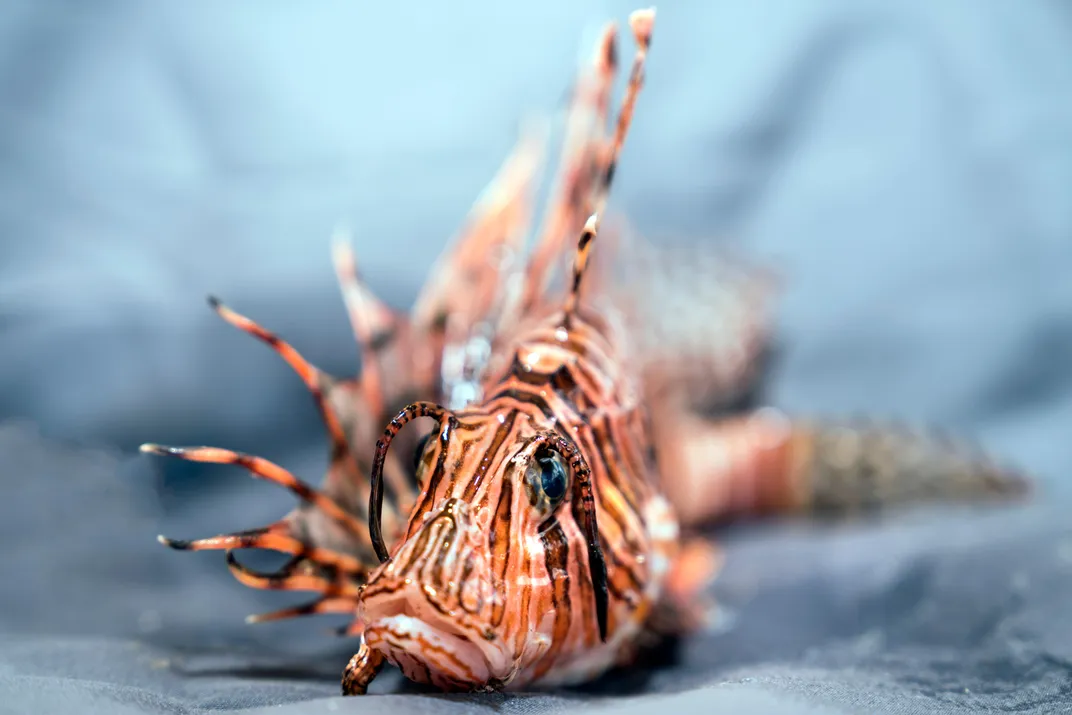
**********
In Which I Speak to the Mermaid
Saturday night, and there’s a lionfish tasting.
This is upstairs at the Bodacious Olive, a restaurant and event space on a charming old-town stretch of brick storefronts not far from the park and the tournament tents, across from a Pilates studio.
The wind howls and low clouds worry the rooftops, but inside the Edison bulbs glow and the wineglasses sparkle and the test kitchen is as snug and clean as a catalog layout. There are 40 or so of us here, sponsors and spear hunters and dive masters, wives and husbands and scientists, captains and mates and mermaids. Celebrity Flora-Bama “chef-advocate” Jon Gibson is making lionfish tacos and lionfish sashimi and talking about sustainability and lionfish deliciousness.
There’s Captain Andy, and there’s Allie and Brian and John and Steve. Barry isn’t here. He’s across town at Pensacola State for a screening of the documentary Reef Assassin, produced by Mark Kwapis and edited by Maribeth Abrams. It’s all about the lionfish invasion, but thanks to a scheduling wormhole these two events are happening at the same time. Some of the people at the movie should be here. Some of the people in the movie are standing right in front of me. Confused, I talk to the mermaid. Her name is Moira Dobbs. She is from Plano, Texas—where she runs a mermaid school.
I’m in italics, and a business suit.
Do you find that the kids retain the things you tell them about lionfish?
“Absolutely. And what’s so great is Coast Watch Alliance not only does amazing things for the lionfish invasion issue, but they also are big into marine debris awareness and cleanup. When I do these in-character performances, if they’re a birthday party, if they’re an event, I bring balloons, straws, fishing line, different things that I pick up at the bottom of the ocean as a diver, and I say, ‘Hey, it was so nice to meet you, when I go home look at all these things that are all over my house,’ and I watch it wash over these kids. And it’s creating little eco-warriors.”
She looks just about exactly how you’d picture a mermaid. Pale. Pretty. Lots of auburn hair. In fact, think of Ariel easing out of her 20s, on her way to a job interview, and you’ll have it. But out there under the tent, on her chaise, sun bright and the bay sparkling, wearing the tail and her magnificent fin, talking to children, the illusion is complete.
So how long have you been doing this?
“Professionally, a couple years now. I host a full-time year-round professional mermaid school, that’s actually in land-locked DFW, Texas.”
Do you get a lot of good turnout, in Dallas-Fort Worth?
“We do, and many walks of life, for mermaid school, and that also allows me to establish a great performance troupe that does the same kind of in-character performances that I do. Birthday parties, ocean education, library readings, stuff like that.”
Are you a lionfish hunter on your own time?
“I am, I am. Yes.”
So you know all these guys?
“Yes. As a mermaid and a diver.”
I was going to say, do a lot of the dads hit on the mermaid, when they bring the kids over?
“We get the ‘Hey, speaking mythologically, I don’t know if mermaids wear tops!’ We call those ‘merverts.’ But yes, I’m all about the banter.”
So the tail...“That thing I was wearing today is a free-diving mono-fin embedded inside 40 pounds of platinum Dragon Skin silicone. Yeah. So you can free-dive in the ocean in that thing.”
Hot, though, on land.
“Yes. It is hot. It’s neutrally buoyant, and really wonderful to swim in the ocean, or pool. But it’s a little rough after a few hours. I do dry out. Every two to three hours, I take a 30-minute break. You need to. Your feet are inside of that really heavy fluke. The fluke is the bottom of the tail that you see. It’s kind of like being en pointe, in ballet.”
So if you could tell America one last thing, as the mermaid spokesperson—
“Yes...”
—on behalf of the lionfish invasion awareness—
“Yes...”
—What would you say?
“Seek, find and destroy, man.”
**********
Truth is, lionfish tastes pretty great. The raw flesh of the fish is opalescent, fine-grained and smooth and nearly translucent, with a flavor to match. On the tongue, uncooked, it melts fast and tastes faintly of the sea—a memory of salt rather than salt itself. Baked, broiled, fried, poached, grilled, seared or blackened, the meat of the fish is firm and white and buttery. It takes and holds whatever flavors you throw at it, whether you’re making ceviche or fish and chips. It stands up to Cajun rub and to citrus and to wasabi and to remoulade and cilantro and garlic and ginger and cumin and aioli. It won’t back down from red peppers or green chilies. It is as fearless as the person cooking it.
Everyone lines up for samples. Lip-smacking ensues.
“Don’t be afraid of it,” Jon Gibson says low and sweet to us all. “This is a versatile fish.” He’s slicing fillets so thin you could read a newspaper through them if anyone still read newspapers. “Just remember, everybody, the fish is venomous, not poisonous.”
And out we all go into that windy evening.
Sunday
Most of the tents were blown down overnight, so the park looks forlorn as folks work to reset for the big day. There’s Captain Andy picking up chairs and tables while Adele rolls in the deep on the PA. The early crowd is sparse, but by midmorning, even under threat of rain, the little plaza is filled again, and the music rises with the smoke from the grills and the waves pound the seawall and the crowd waiting for lionfish-stuffed jalapeno poppers is as long as the line for the crawfish boil.
You hear fragments on the wind, from the chefs and the experts and the kids and their parents . . .
“they reproduce every three or four days”
“these are fantastic”
“it’s really good”
“aren’t they poisonous?”
“venomous”
“go tell your restaurants you want lionfish”
“there’s not much I won’t eat”
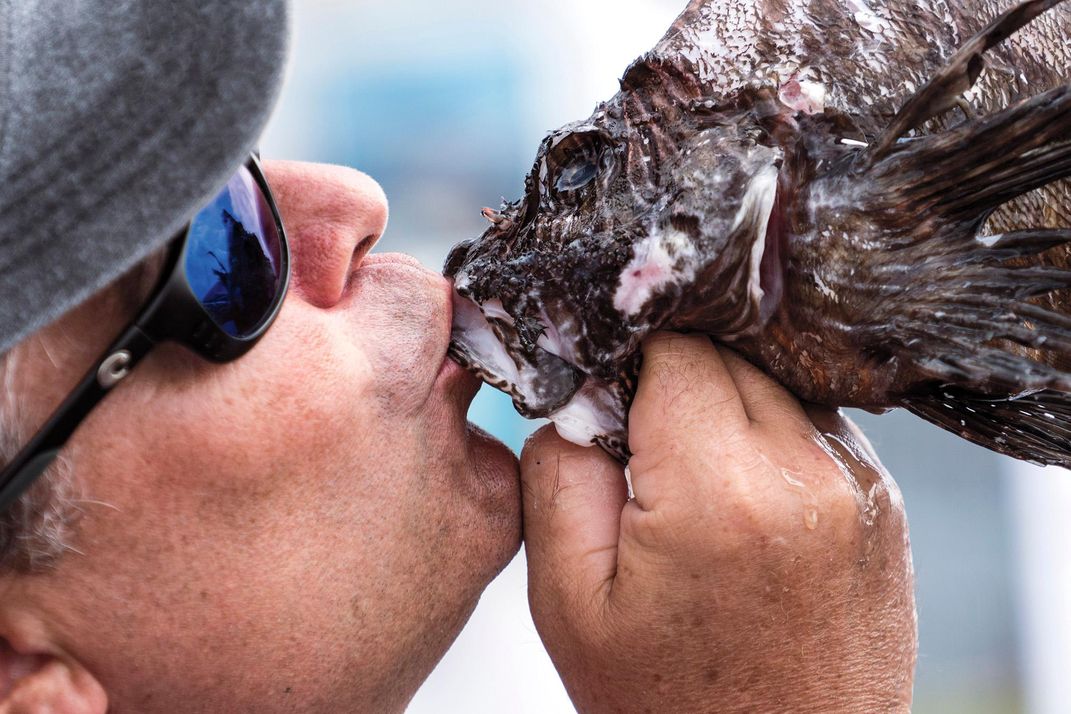
Early in the afternoon, it’s time for the count and the presentations to the winners. Captain Andy handles the microphone and the afternoon is an inventory of his gratitude and his enthusiasm. He and the crowd are stoked.
Biggest fish speared was a little over 17 inches.
Our boat, “Team Niuhi,” finishes third, with 539 lionfish. “Full Stringer,” a crew from up the road, is second, with 859 fish. Team “Hang On”—the all-women’s team—wins going away, with 926 lionfish. The crowd roars and many tears are shed. Allie won’t stop hugging people. For several hours.
There’s a presentation of plaques and prize money and prizes, many of them quite nice, from dive gear to drones to nights out on the town, but it’s pretty clearly pride everyone competes for.
Rachel Bowman is first among equals on the women’s team. She is a commercial spear fisher down in the Keys and appears to be the lean, inked, freckled and clear-eyed apex predator for the entire state of Florida.
She shoots and sells lionfish every day.
“I’ve got about a 40-mile range that I work, from Alligator Reef to American Shoals, and I have my spots. I have secret spots. I have public spots. The commercial fishermen in the Keys have been amazing as far as sharing their numbers with me, especially the commercial lobster guys. They know where there’s big piles of rubble that other people don’t know about because their traps get smacked on them. They really appreciate what I’m doing, and they help me out as much as possible. I like to think that the Whole Foods thing has made them more money because now the lionfish in their traps, they’re not worth $2 a pound anymore. Now they’re worth $6.”
You’re fighting them to a draw down there.
“Yeah, I’ve got commercial trap guys that tell me that last year, the lionfish numbers kind of stopped going up, and this year they’ve actually gone down a little bit.
“I know Dr. Stephanie Green with Oregon State University has been doing some research with the organization REEF. They found, on isolated coral heads in the Bahamas, that not only is there a decline in the lionfish population, but there’s actually a resurgence of the native fish populations. What we’re doing—we’re never going to get rid of them—but I have to believe we’re making a difference. She and I measured fish today and the whole table was covered in egg sacs. Those are egg sacs that are never going to have a chance to do any kind of damage.”
What do you think of Doc Gittings’ traps?
“Well, I’ve got a brother-in-law who’s a commercial lobster trapper, and this year in three months, he pulled up 6,000 pounds of lionfish in his lobster traps. That’s in sandy bottom, 200-300 feet, where divers can’t go. So, maybe if he was allowed to deploy those traps when lobster season is closed, then that’s another possibility.”
Rachel Bowman has a diver-down flag enameled on her big toenail. She is the real reef assassin.
Grayson Shepard is the Panhandle charter captain who masterminded the women’s team. Like Captain Andy, it is impossible to judge his age. He is sun-red and fit and rawboned and could be 35 or 235. He is now the Red Auerbach of lionfish, and we sat for a while to talk in the Florida Fish and Wildlife Conservation Commission motor home.
“I put together this little dream team that are just hardcore and fun as hell to hang out with. And they are dedicated and they are killers of the deep. They went with me in four-foot seas the past two days where a lot of men would not have gone. Several of my fellow charter captains canceled trips and they were freaking out. I’m like, I’m going. The girls are like ‘go go go!’ My buddies were on the radio like, ‘Are you OK?’ ‘Are you all right?’ I’m like, man we’re fine. We’re kicking ass out here.”
I explained to Captain Shepard about the throwing up.
“Well they didn’t throw up. The girls suited up and went down. Over and over and over again.”
Captain Shepard is himself a little bit of a sentimental badass.
“This crazy little lionfish has brought together so many incredibly cool people. We all have the same screw loose in our head. That same screw makes you an interesting, easygoing kind of person. It’s a little community. We all have this common obsession with lionfish. You could put all of us in a van and drive us across the country. We would get along like peas and carrots. We’re best friends. When you meet us, we’re all like of the same tribe. It gives us the chills.”
The Lionfish Cookbook
The second edition of The Lionfish Cookbook contains brand new recipes from highly regarded culinary professionals throughout the Western Atlantic, Caribbean and Gulf of Mexico, all of whom have created unique methods of preparing lionfish.
**********
Even with most teams canceling their Saturday fishing, the tournament still brought in nearly 4,000 lionfish. Turns out the only thing more rapacious on earth than a lionfish is you and me.
So I ask folks as they leave, “You think eating them might be able to help stop the invasion?”
And they’ll say, “It’s fantastic, I hope it helps.”
or
“Fingers crossed!”
or
“It ain’t gonna hurt. It’s gonna help a little bit, I guess, but I don’t know. That’s a big Gulf out there. That’s all they can do to try and stop it? I don’t see how that’s going to stop it.”
**********
For the last hour or two of the afternoon, everyone puts their feet up. After three days of work and worry and nausea, six-foot surf and 100-foot bounces, there’s finally time to sit around the tents and the trailers and drink spiced rum and tell some lies. This everyone does with great relief.
Music plays and the wind eases and the bay is a luminous green.
Andy says, “I think it went great. We had some tough obstacles and I was a little bit nervous that maybe we wouldn’t have the best turnout and you know, under the circumstances, with the tough weather and all, I think we did a fantastic job and everybody really came together and they went out and worked real hard at getting their fish. They came in and they were all very supportive and they all had an awesome time and I think everything went very smoothly. I think it came out fantastic. I’ve been on the water long enough to know that you cannot predict the weather and even when you do, you’re wrong.”
Allie is still hugging people.
“Let’s go eat,” Andy says.
The Big Finish
So, quiet and tired, everyone caravans to the Sake Café, a sushi place a couple of neighborhoods over, eating what they speared, now set out on two long tables full of hand rolls and sashimi, chopsticks and wasabi and cold beer. The kitchen bustles, but the place isn’t crowded. It’s early yet, even for Sunday dinner in Pensacola. At the head of the longest table Andy’s wearing that enigmatic smile, that sidewise Andy smile, but Barry is the one who stands to speak.
He thanks everyone for their hard work and for their excellent spearfishing skills and for fighting this good fight. He thanks the event sponsors for their contributions and the restaurant for making dinner. He talks about what all this means to the environment and to Florida and to him. When he talks about the camaraderie of the divers and the friendship and yes, the love, he surprises himself by choking up. He gathers himself and goes on just a little longer.
“You gotta eat ’em to beat ’em,” he says at the end.
And everyone applauds.
Dolly back, roll credits, that’s the last scene in your Hollywood movie.
But if you’re writing a magazine story, maybe you don’t end it there. Not like that. Not with sushi and a speech. Too upbeat. Too certain.
Nor can your story end with that unremarkable wind steady off the bay, not with the striking of the tents and boxing of the leftover brochures, not with the loading of the vans or the vendors rolling up their banners or emptying their grills, and not with the stragglers wandering back to the parking lot under a Sunday sky as flat and gray as gunmetal.
What you want is something to remember them all, a way to think of Florida and that crazy light and that water and those men and those women and those fish.
So maybe you’ll look back, no matter where you go or what you do, and see them all forever at the dock that Friday night, the whole wrung-out, laughing, groaning boatload, Andy and Allie and Barry and John and Carl and Alex and those scientists gathered around those big boxes of fish, those big coolers filled with ice and fins and Japanese fans, the sun faltering in the west, tangled in the trees, shadows long on the ground and the sky a low flame up there in the spreaders and the shrouds. One of the marine biologists leans down into the cooler and gingerly plucks up another lionfish. “I’ve got you now,” she says to herself and for a second you don’t know if she means one fish or the whole species and anyway you can barely hear her because Andy’s got the stereo cranked on the boat and Van Halen is playing “Hot for Teacher.” It’s all a trick of the light, sure, too sentimental and too droll, but it’s also true and that’s the beauty of it.
It’s a long fight. And maybe the lionfish win.
Maybe that’s your ending.
A Note to our Readers
Smithsonian magazine participates in affiliate link advertising programs. If you purchase an item through these links, we receive a commission.
/https://tf-cmsv2-smithsonianmag-media.s3.amazonaws.com/accounts/headshot/Jeff_MacGregor2_thumbnail.png)
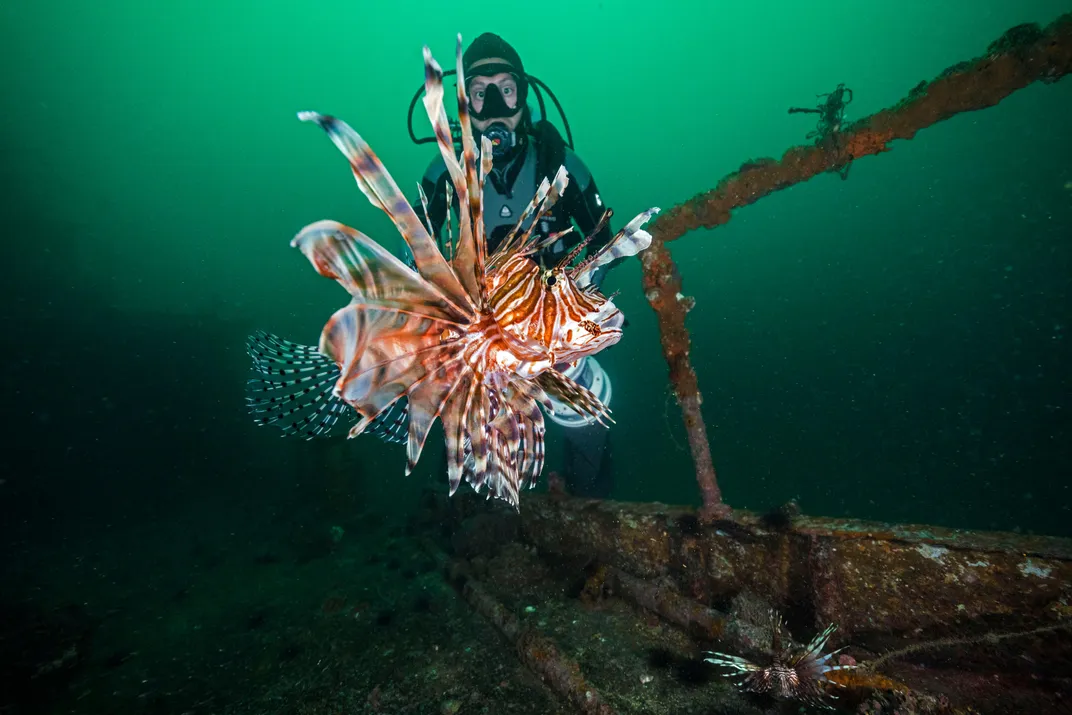
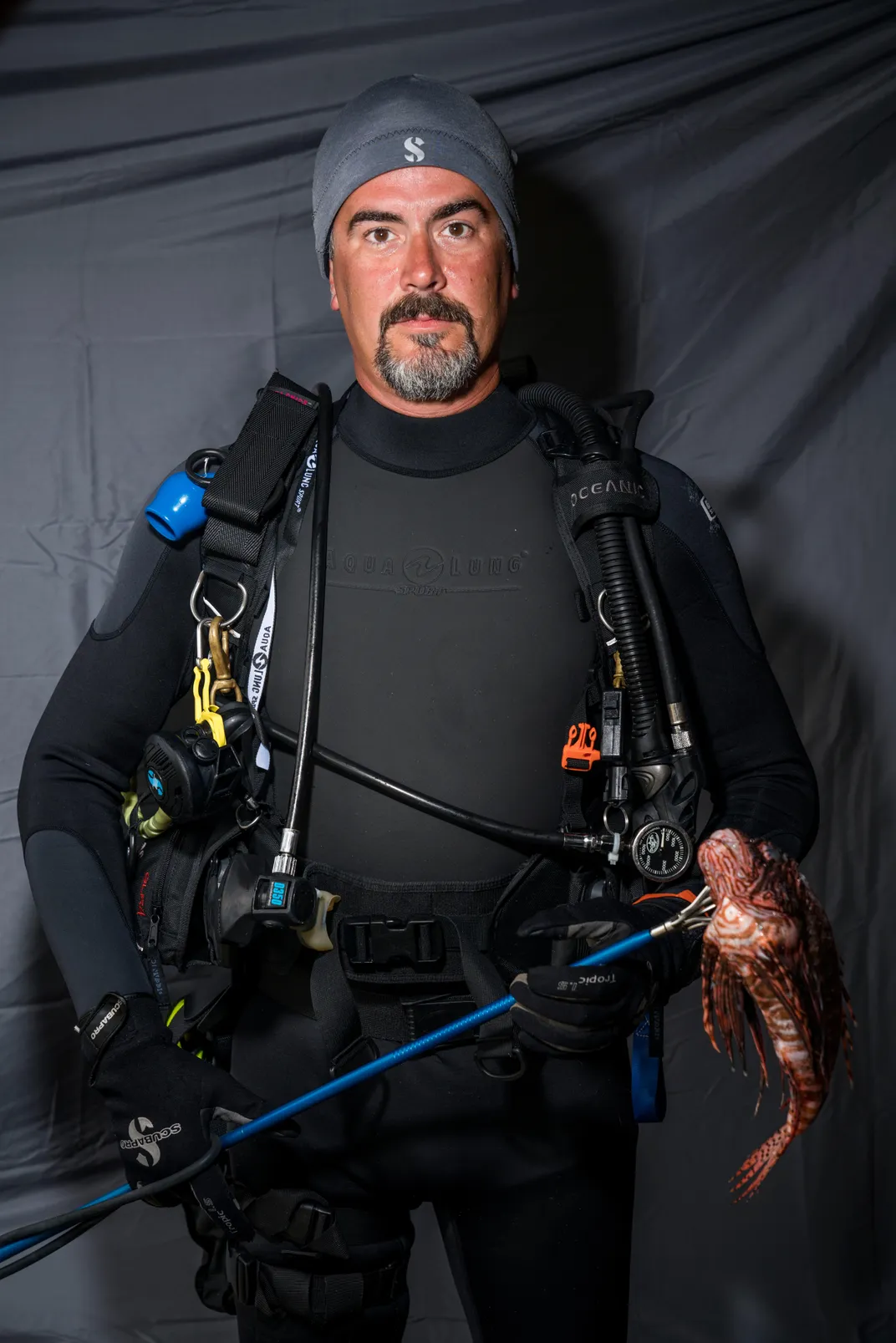
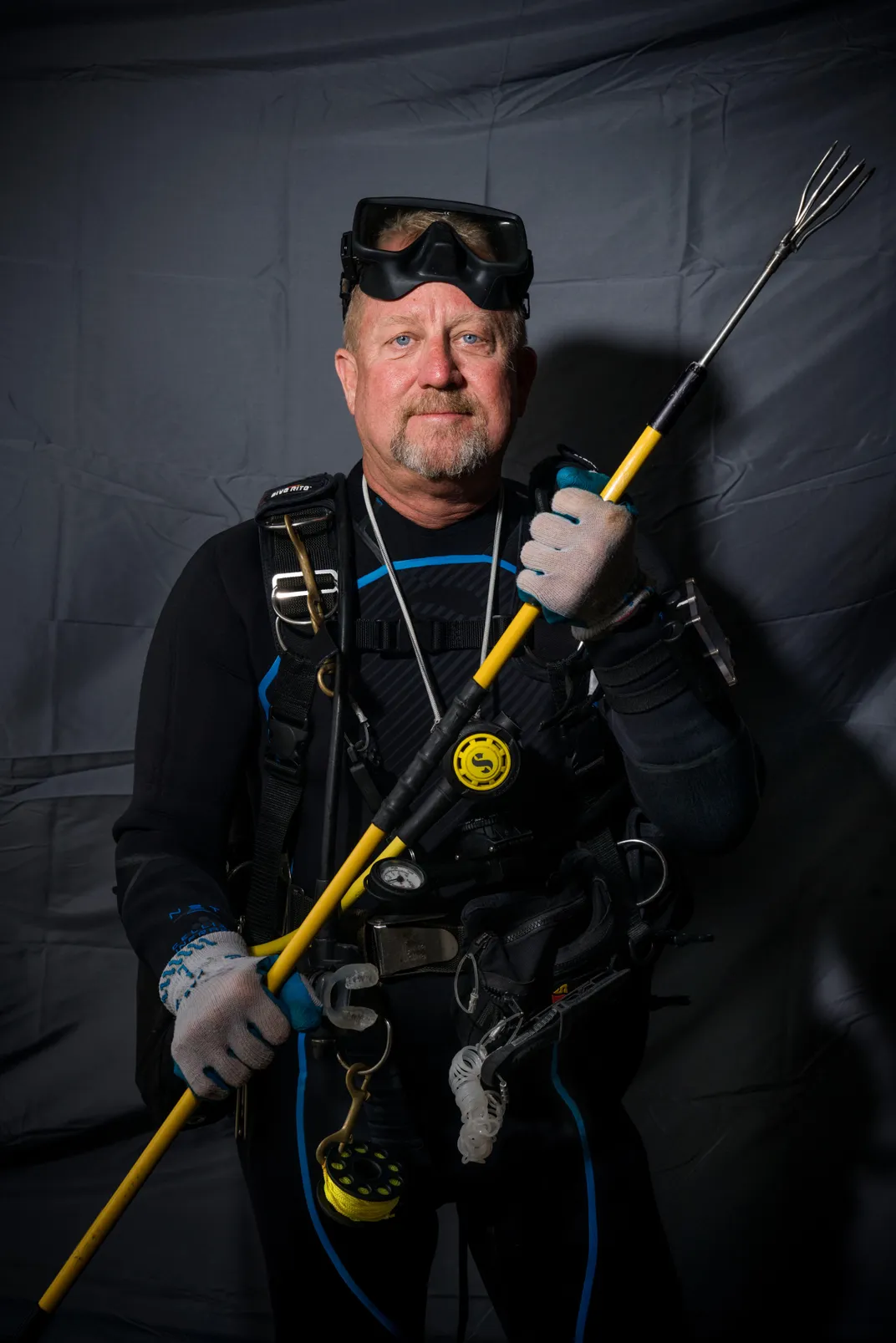
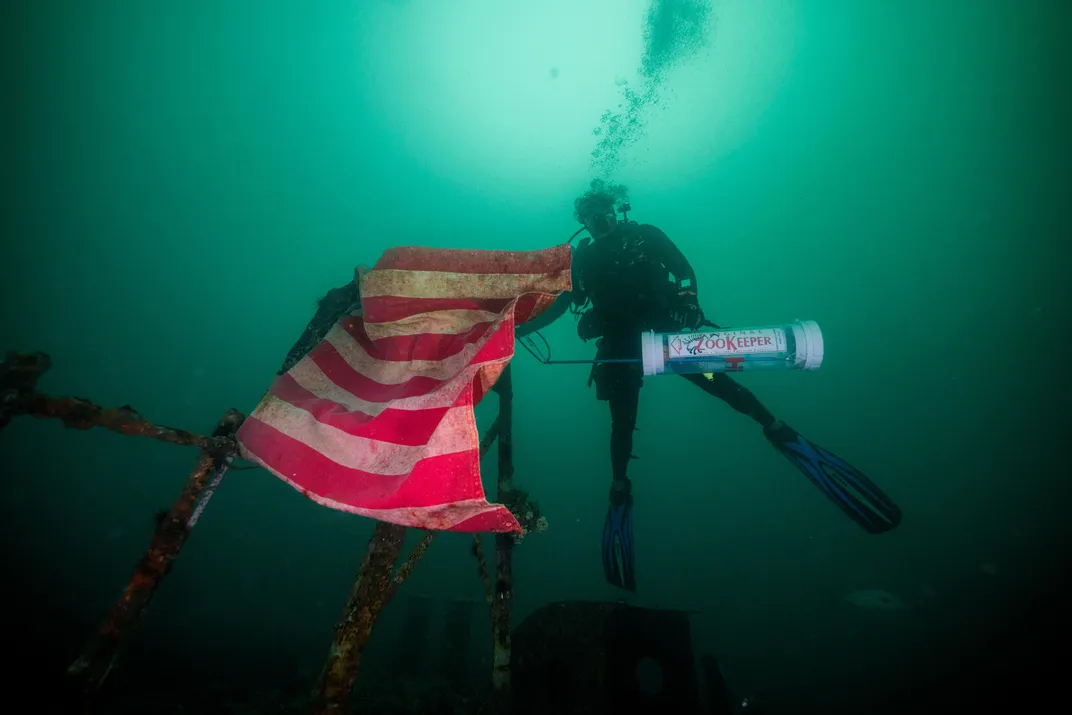
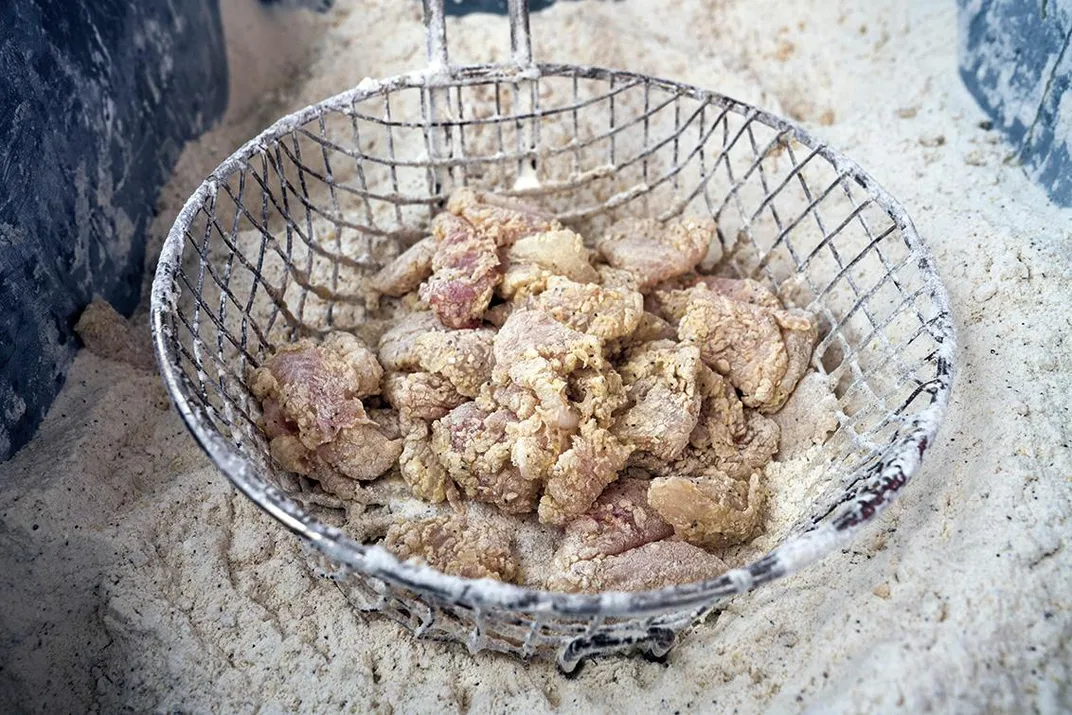
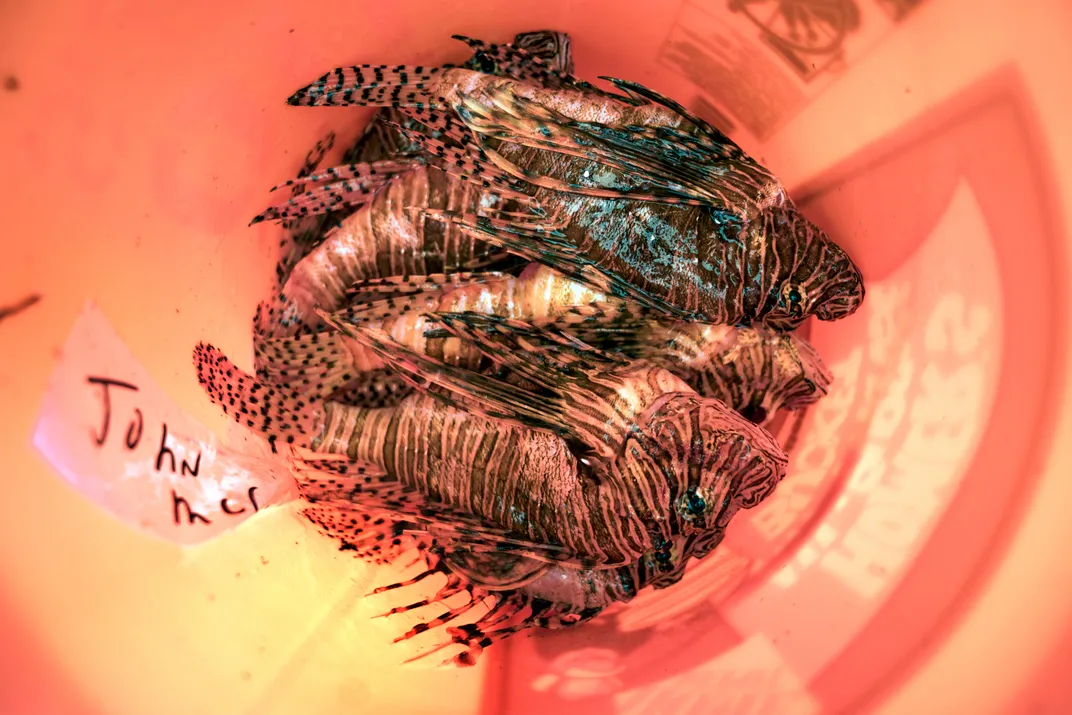


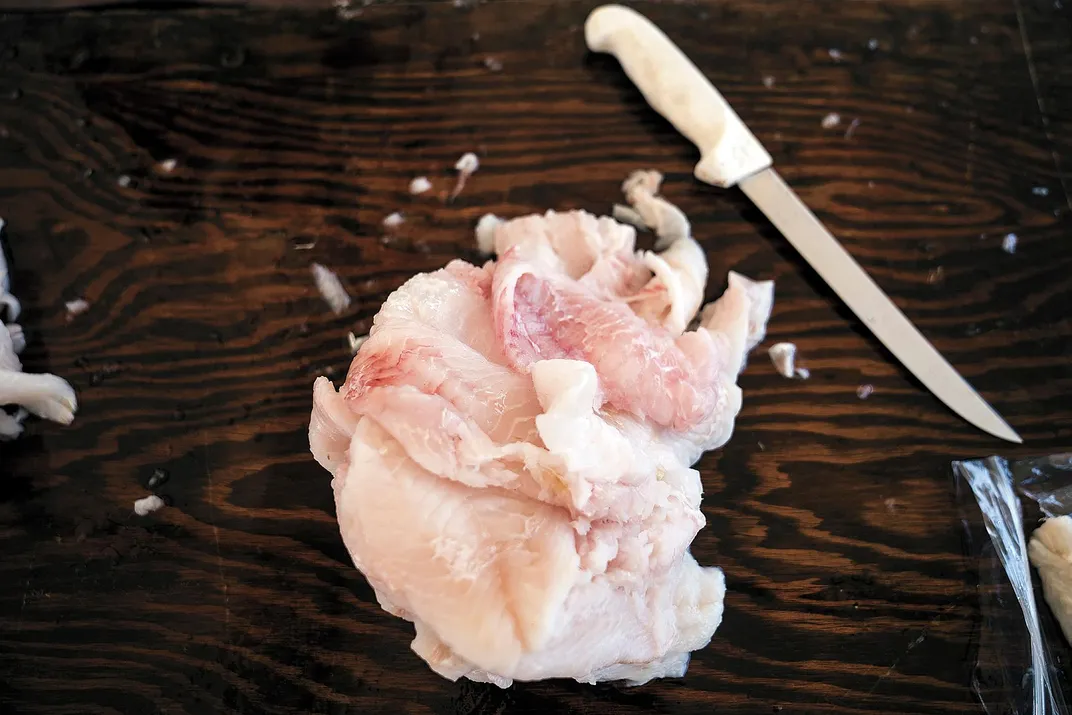

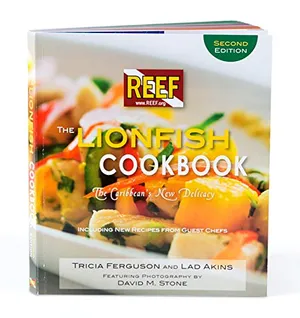
/https://tf-cmsv2-smithsonianmag-media.s3.amazonaws.com/accounts/headshot/Jeff_MacGregor2_thumbnail.png)